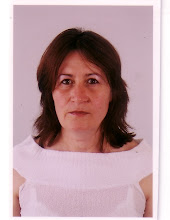Scientists are envisioning a new type of rechargeable battery that would store heat absorbed from the sun instead of electrical charge.
The idea is a step closer to reality, they say, with a new study revealing how a molecule called fulvalene diruthenium works to store and release heat on demand.
A YouTube video from MIT scientists describes their research into a new type of rechargeable battery that would store heat absorbed from the sun.
Although the chemical, discovered in 1996, is prohibitively expensive, researchers predict the new understanding should make it possible to find similar, cheaper materials. The findings are described in a paper in the Oct. 20 issue of the research journal Angewandte Chemie.
The molecule, fulvalene diruthenium, undergoes a structural change when it absorbs sunlight, putting it into a higher-energy state where it can remain stable indefinitely. This state is analogous to that of a rubber band that’s stretched and then put somewhere where it stays stretched out for any desired length of time.
In the case of fulvalene diruthenium, the molecule can snap back into its original shape triggered by a small addition of heat or a substance called a catalyst. In the process, it releases the heat that was originally absorbed.
That’s a simplified version of what happens—but actually, the study revealed “there’s an intermediate step that plays a major role” in the process, said Jeffrey Grossman of the Massachusetts Institute of Technology, who led the research. In this middle step, the molecule forms a semi-stable configuration partway between the two previously known states. “That was unexpected,” he said, but it helps explain why the molecule is so stable, why the process is easily reversible and also why substituting other elements for ruthenium hasn’t worked yet.
In effect, explained Grossman, this process makes it possible to produce a “rechargeable heat battery” that can repeatedly store and release heat from sunlight or other sources. In principle, Grossman said, a fuel made from fulvalene diruthenium, when its stored heat is released, “can get as hot as 200 degrees C, plenty hot enough to heat your home, or even to run an engine to produce electricity.”
Compared to other solar-energy approaches, he said, “it takes many of the advantages of solar-thermal energy, but stores the heat in the form of a fuel. It’s reversible, and it’s stable over a long term. You can use it where you want, on demand. You could put the fuel [out] in the sun, charge it up, then use the heat, and place the same fuel back in the sun to recharge.”
Because of its cost, this molecule “is the wrong material, but it shows it can be done,” he added.
The next step, he explained, is to use a combination of simulation, thinking, and databases of tens of millions of known molecules to look for other candidates that have structural similarities and might show the same behavior. “It’s my firm belief that as we understand what makes this material tick, we’ll find that there will be other materials” that will work the same way, Grossman said.
http://www.youtube.com/watch?v=dNVwIgv8eUU&feature=player_embedded
Абонамент за:
Коментари за публикацията (Atom)

Няма коментари:
Публикуване на коментар